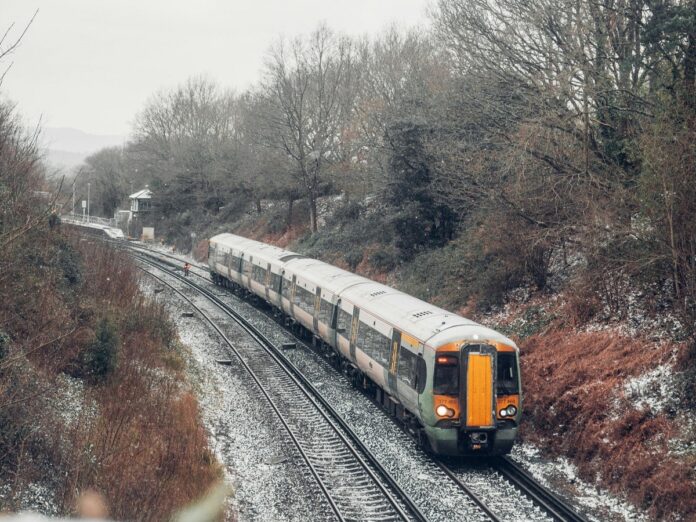Young people across the UK will soon have the opportunity to embark on train driver careers up to three years earlier, in a move designed to increase the number of drivers, improve service reliability, and provide school and college leavers with a direct route into skilled employment.
Thousands of jobs and apprenticeships will become available to 18 to 20-year-olds as early as December 2025. These roles will offer valuable experience and long-term career prospects, while simultaneously supporting the country’s transport network and driving economic growth, a key element of the government’s Plan for Change.
This initiative is also intended to strengthen the rail workforce and reduce delays and cancellations caused by driver shortages, which currently account for a significant 87% of cancellations made the night before a service is due to run.
Lowering the minimum age for train driver training is seen as a way to future-proof the railways, reducing the current reliance on drivers working on their rest days by bringing more individuals into these crucial roles and ensuring a consistent influx of new drivers into the industry.
The current average age of a train driver is 48 and rising, with 30% of the workforce expected to reach retirement age by 2029. This change aims to bridge this impending gap by attracting younger talent into these skilled positions now, thereby preventing future shortages and ensuring consistent, reliable services for passengers.
Furthermore, in a profession where women make up less than 9% of the workforce and ethnic minorities represent less than 12%, this change is expected to broaden professional opportunities to a much wider demographic.
This development is presented as another key step in delivering the government’s Plan for Change by creating skilled jobs and safeguarding reliable train services, with the aim of boosting the economy and improving living standards across the country.
Transport Secretary, Heidi Alexander, said: “We’re taking bold action to improve train services and unlock thousands of jobs.”
“We’re committed to getting the economy moving and a big part of that is getting young people into the workforce, putting them on track for a skilled and fulfilling career, which will boost growth across the country and help deliver our Plan for Change.”
“We’re future-proofing our railways against delays and cancellations caused by a shortage of drivers, ensuring that we can provide reliable, passenger focused train journeys under Great British Railways for decades to come.”
This decision follows a consultation undertaken by the Department for Transport (DfT) last year, which reportedly received overwhelming support from across the rail industry and is considered a significant step forward in rail reform.
Mick Whelan, General Secretary of ASLEF, the train drivers’ union, said: “ASLEF has been campaigning for many years for the lowering of the age at which drivers can start training.”
“This decision – to allow people to leave school, or college, and join the railway in the driving grade at 18 rather than wait until they’re 20 – will increase diversity in the driver’s cab by encouraging more people from ethnic minority backgrounds, more LGBT+ people, and more women – as well as more young people – to drive trains on Britain’s railways.”
“Because, at the moment, young people who want to become train drivers leave school or college at 18, get other jobs, and we miss out as an industry, as they don’t wait around until they turn 20 to find a career.”
Several other countries, including the Netherlands, France, Germany, and Switzerland, have already successfully and safely implemented a lower age limit for train drivers, with Japan also considering a change in legislation. Transport for London (TfL) also successfully opened its train driver apprenticeships to 18-year-olds on the underground network in 2007.
The government has emphasised that every individual taking on the role of a train driver will undergo rigorous training to ensure they are competent, qualified, and fit to perform the role safely, guaranteeing the continued safe operation of the UK’s railways.
Work and Pensions Secretary, Liz Kendall, said: “This government is determined to widen the opportunities of all young people.”
“By allowing 18 year olds to take up careers as train drivers we are literally putting them in the driving seat when it comes to finding secure, well-paid work.”
“This is a core part of our plan to lower the number of young people not in education, employment or training and builds on our Youth Guarantee scheme to give all 18 to 21 year olds the chance to earn or learn.”
Education Secretary, Bridget Phillipson, said: “By opening up this vital sector to more young people, we’re not only creating a pathway to high-skilled careers but also addressing the skills shortages that hold back our transport network and economic growth. This is another step forward in our mission to break down barriers and create new opportunities for young people.”
“This is our Plan for Change in action: bringing in fresh, diverse talent, tackling skills shortages and helping to grow our economy across every part of the country.”
This initiative is presented as part of ongoing efforts to improve the railways ahead of the creation of Great British Railways (GBR), which aims to bring track and train operations together to end fragmentation and waste. GBR will have a strong focus on raising standards for passengers, and proposals for its operation, including plans for a new passenger standards watchdog, are currently under consideration.
Daniel Mann, Director of Industry Operations at Rail Delivery Group, said: “Our railways have played a vital role in connecting communities and supporting economic growth for 200 years and train drivers are an important part of this.”
“Working as a train driver is an incredible long-term career opportunity and we want to open the doors, especially to school-leavers, to encourage a wider and more diverse pool of young people to apply, reflecting the communities we serve. These changes will not only help us to recruit the next generation of drivers, lowering the average age of the workforce, but will also help to ensure a resilient railway for the years to come.”
Mark Phillips, CEO at Rail Safety and Standards Board (RSSB), said: “To boost economic growth by running more frequent rail services, the industry needs to invest in enabling more young people to start train driver apprenticeships. Our research determined that 18 year olds are capable of safely becoming train drivers and identified opportunities to improve how the rail industry manages competence for all drivers.”
“Starting a train driving career could be more appealing at 18 than at 20, as young people can choose it over pursuing a degree or an office job. It is an excellent career choice, offering the opportunity to work independently in a role that carries huge responsibility.”
Maggie Simpson OBE, Director General of the Rail Freight Group (RFG), said: “Rail freight thrives when the whole network has the skilled people it needs, so we welcome the decision to lower the minimum driver age to 18.”
“Bringing talent into the cab straight from school can widen the recruitment pool, inspire more young people to choose rail careers and let them build experience earlier but importantly, this is a permissive change. Each freight and passenger operator will decide for itself whether and how to recruit younger drivers.”





